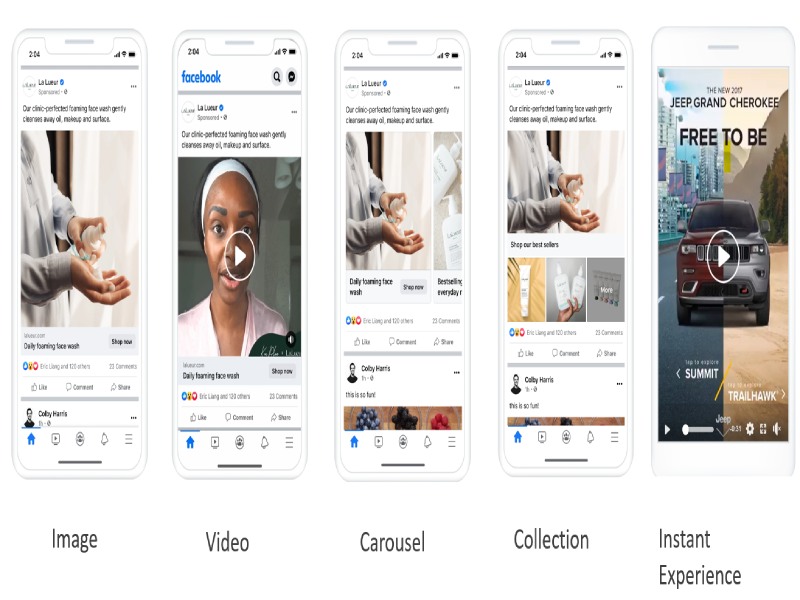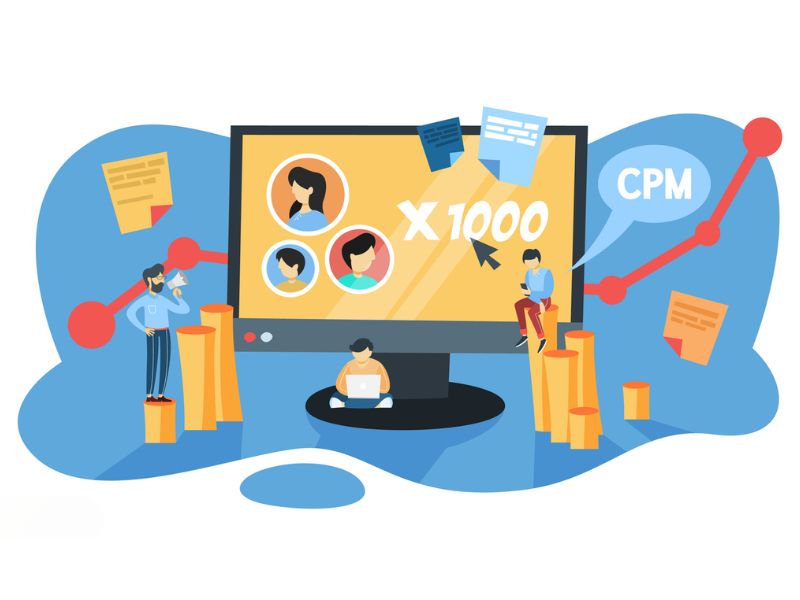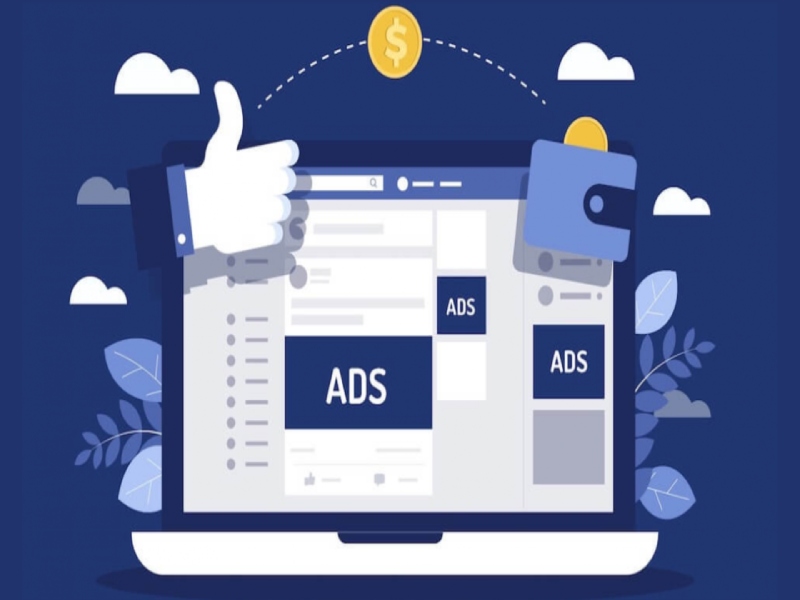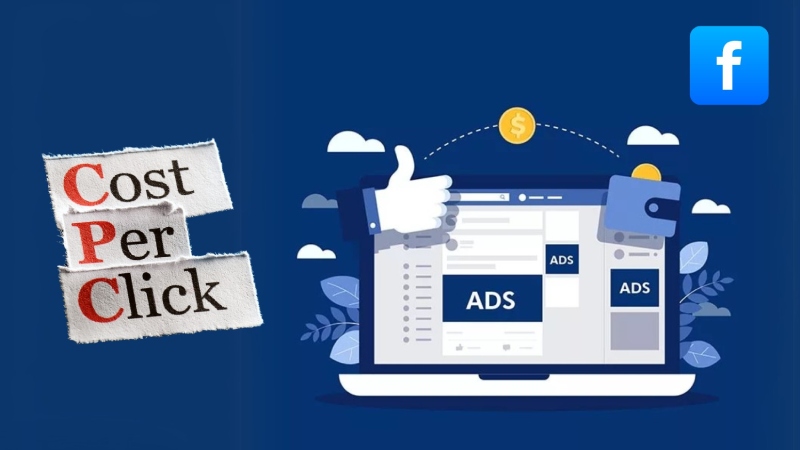CPM Facebook Reels is one of the crucial indicators for measuring the effectiveness of advertising on this platform. But why does CPM matter? And how can you optimize CPM on Facebook Reels compared to other platforms? Explore with NEMI Ads through the following article!
1. Why does CPM Matter with Facebook Reels?
CPM, or Cost Per Mille, is the price you pay for 1,000 impressions on your Facebook Ad. Typically, CPM is prioritized at the initial stage of a campaign when there is a need to increase brand awareness and reach. It is ideal for new brands or products/services with the primary goal of increasing brand impressions.
Facebook Reels has become the choice for many creators to run ads instead of videos or images. This is partly due to the CPM of Facebook Reels Ads. Here’s why this metric is crucial:
- Optimize ad performance: When facing a high CPM, identifying the reasons behind ineffective ads allows you to focus on making adjustments that will better align your ads with the target audience, leading to increased engagement.
- Discover the best ad format: By comparing Reels ads with other formats like Image ads, Carousel ads, etc., in terms of cost and impact, you will be able to choose the most suitable format for your campaign.
- Stay proactive and flexible with budget control: Facebook Reels trends and user behavior can shift quickly, causing fluctuations in CPM. By tracking CPM regularly, businesses can anticipate these changes and plan thoroughly to manage their budget effectively.
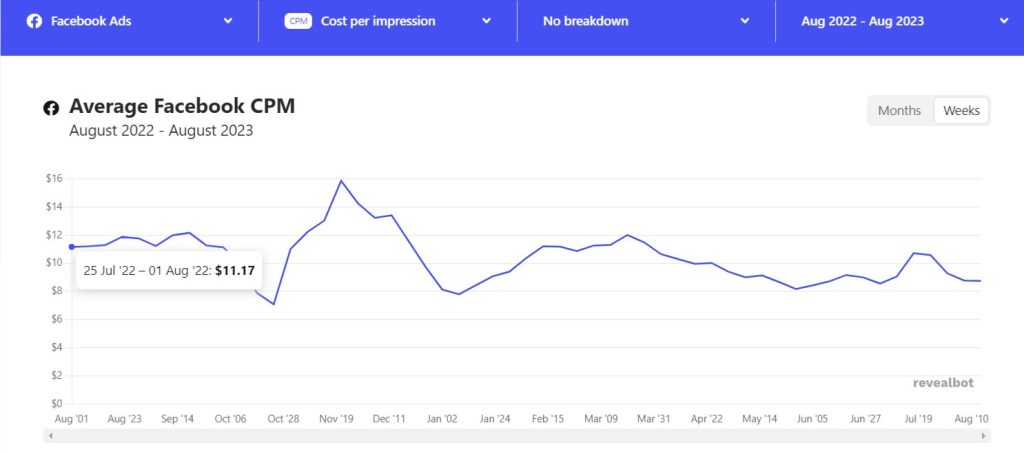
2. Updated CPM for Facebook Reels and Influencing Factors
By analyzing the average CPM for Facebook Ads across the market, businesses can evaluate whether their current CPM is appropriate. Additionally, understanding the factors influencing this metric helps identify areas for improvement and strategies to implement.
2.1. Average CPM for Facebook Reels
There is not a specific CPM rate for each ad format on Facebook. According to Revealbot, the average CPM for Facebook ads in June 2024 was $9.78. This figure serves as a reference point and can vary depending on several factors such as target audience, competition, ad format, and campaign goals.
>> For detailed and accurate advice on CPM for your Facebook Reels ads, contact NEMI Ads now!
2.2. Top 4 factors Influencing CPM on Facebook Reels
Understanding the factors that influence CPM can help you make informed decisions and optimize your campaigns for better results. Here are the top four factors:
Audience Targeting
The scope of your target audience can significantly impact CPM, depending on your business goals. There are two common types of audience targeting: broad targeting and specific targeting.
To reach a larger audience, opt for broad targeting, which usually results in lower CPM due to reduced competition for ad placements. This approach is ideal for campaigns aiming to maximize visibility and engagement across a wide demographic. However, it’s important to note that while broad targeting can lower CPM, it might not always lead to higher conversions.
For more precise conversions, focus on geographic and demographic targeting to reach a defined audience. Additionally, as mentioned by Hootsuite, leveraging Facebook’s Advantage+ audiences feature can further reduce costs by up to 28% per result, thanks to AI-driven targeting that focuses on your ideal customer base. This feature allows for more detailed targeting, which can improve the relevance of your ads and potentially lower your CPM.
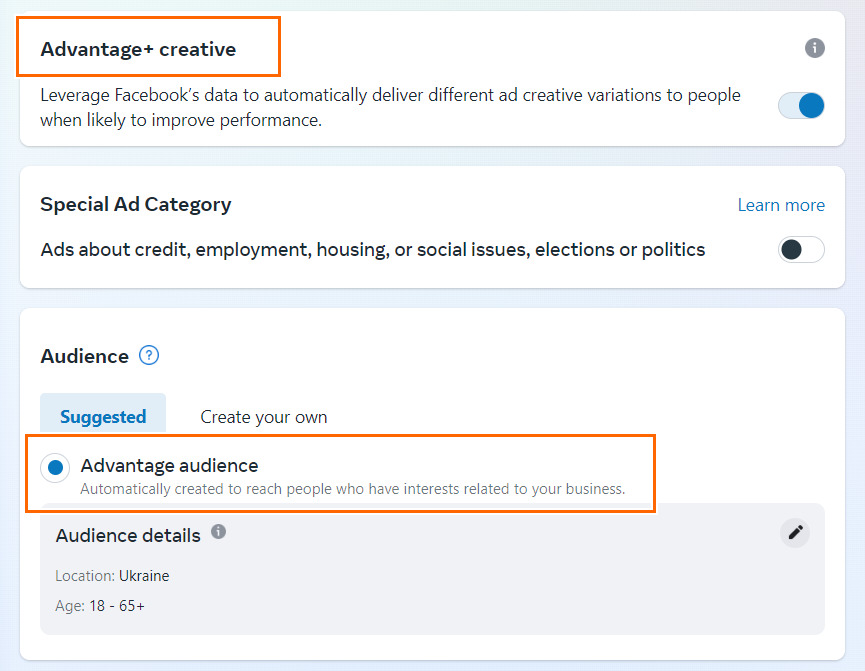
Time of Year
CPM tends to surge during peak seasons, such as holidays or when public demand for products or services is high, due to increased competition. Notably, CPM from October to December is 58% higher than during the rest of the year, according to Nesh Soni – founder at AmpVis. Businesses should consider investing in ads during these peak times rather than spreading their budget evenly throughout the year.
Ad quality and relevance
Low-quality or irrelevant ads receive more negative feedback, leading Facebook to limit their exposure, which increases CPM. Therefore, it is essential to monitor feedback metrics such as likes, comments, shares, hides, and reports. Improving ad relevance can lower CPM by ensuring that your ads resonate with your target audience.

Bidding strategy
CPM also hinges on bidding strategies, which include:
- Spend-based bidding: This approach ensures that your ads are delivered efficiently within a predetermined budget. It’s designed to maximize the effectiveness of your ad spend by maintaining tight control over costs, making it ideal for businesses looking to manage their CPM closely. This strategy is particularly useful for campaigns with strict budget limits, allowing for more predictable spending.
- Goal-based bidding: This strategy prioritizes achieving specific campaign objectives, with CPM as a secondary consideration. Businesses can set budget limits, allowing the focus to be on reaching high-quality leads or conversions, even if it means higher CPM costs. This approach can be beneficial when the quality of leads or conversions is more important than the overall cost.
Spend-based bidding allows better CPM control, while goal-based bidding enhances the potential to reach high-quality leads. Manual adjustments can also be made for more cost-effective control, though it requires more time for monitoring.
3. 5+ Tips to lower CPM on Facebook Reels
High CPM across any ad format indicates that your campaign may not be running effectively. Learn more about why CPM might be high and the setbacks it can cause to your campaign at How to lower CPM Facebook Ads.
Below are six methods from NEMI Ads to optimize your Facebook Reels Ads:
3.1. Refine Targeting
Refining targeting is crucial to make sure your ad reaches the right audience while excluding irrelevant groups. By following this tip, you can ensure that your CPM spending is more efficient and directly contributes to your campaign’s success.
To refine your customer targeting, make sure that you follow these steps:
- Access Facebook Ads Manager and select your campaign.
- Navigate to the “Audience” section.
- Use Meta Business Suite to analyze your current audience and identify key demographics, interests, and behaviors.
- Create and save a Custom Audience that fits your goals.
3.2. Improve Ad Creative
Besides, you should focus on developing visually appealing and interactive content to capture your audience’s attention. This not only boosts interaction but also improves ad delivery, ultimately leading to a lower CPM.
These are the steps you should follow to improve ad creative:
- In Facebook Ads Manager, create multiple versions of your ad with different creative content (images, copy).
- Select “A/B Testing” during campaign setup.
- Run the test for at least 7 days, then analyze the results to determine which creative performs best.
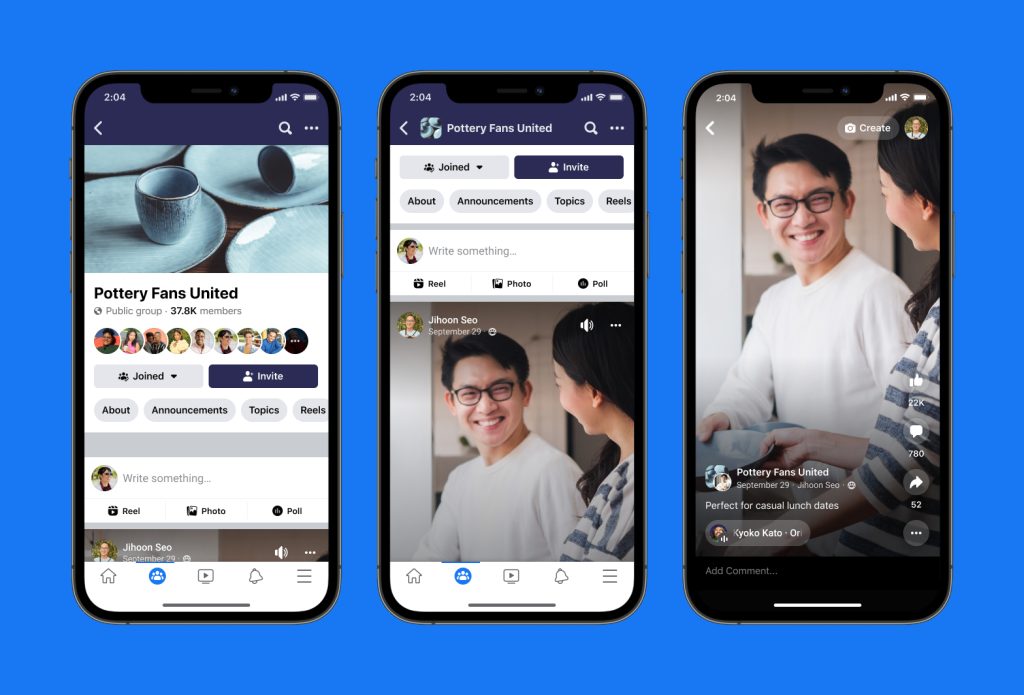
3.3. Leverage Facebook’s Automated Tools
Facebook’s Automated Tools is useful to optimize your CPM through resources and ad placements. To utilize this tool, use Facebook’s understanding of user behavior, refined through ongoing testing, to allocate your resources effectively and select the best ad placements. This strategy optimizes your ad performance by ensuring it appears where it will have the most impact.
These are steps to do with CBO (Campaign Budget Optimization):
- When setting up your campaign in Ads Manager, turn on “Campaign Budget Optimization”.
- Set a budget aligned with your goals.
- Facebook will automatically allocate your budget across ad sets based on performance.
- Monitor the results in Meta Business Suite and adjust as needed.
These are steps to do with Automatic Placements:
- Access Facebook Ads Manager.
- Under “Placements,” select “Advantage+ Placements” (formerly known as Automatic Placements).
- Choose “Stories and Reels”.
- Facebook will automatically place your ads where they are likely to perform best, including Facebook Reels.
- Review the results and adjust placements as needed.
3.4. Engage with Active Times
Timing is essential in capturing your audience’s attention when they are most active. By scheduling your ads during peak activity times, you can prompt Facebook’s algorithm to prioritize your ad delivery, ensuring it reaches the most engaged users.
To engage with peak times, make sure that you follow these steps:
- Use Facebook Page Insights or Meta Business Suite to identify when your target audience is most active.
- Go to “Create a new ad set or edit an existing one” in Ads Manager.
- Select Lifetime Budget from the Budget and Schedule drop-down menu.
- Navigate to the “Ad Scheduling” section and select the time slots you want to run the ad set.
- Click “Next” to finalize scheduling.
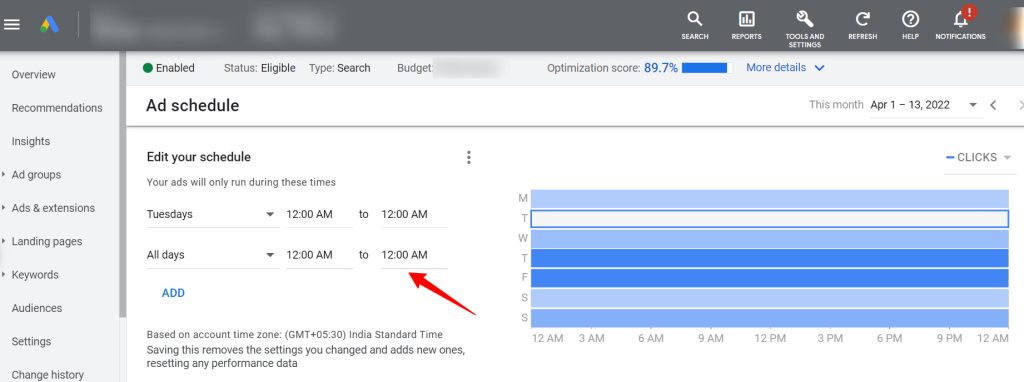
3.5. Enhance Ad Relevance
Improving ad relevance boosts user engagement and reduces ad fatigue, leading to a more positive user experience. This approach can positively impact your CPM by maintaining audience interest and minimizing the chances of your ad being overlooked.
Improving ad relevance by:
- After launching your ad, monitor its performance in Ads Manager.
- Check “Relevance Diagnostics” for Quality Ranking, Engagement Rate Ranking, and Conversion Rate Ranking.
- If any relevance metrics are low, review your targeting and creative content.
- Adjust your audience or improve your ad’s creative content accordingly.
3.6. Adjust Bidding Strategy
Another factor that you should not ignore is bidding strategy. Managing this strategy effectively can help increase your competitiveness with an optimal CPM. By refining your bidding strategy and monitoring performance, you can ensure that your advertising budget is used efficiently, maximizing the return on investment.
These are steps to follow when adjusting bidding strategy:
- In Ads Manager, select “Manual Bidding” during ad set creation.
- Set a maximum CPM bid based on your budget and campaign goals.
- Regularly monitor campaign performance.
- Adjust your bid amount as needed to remain competitive while maintaining a lower CPM.
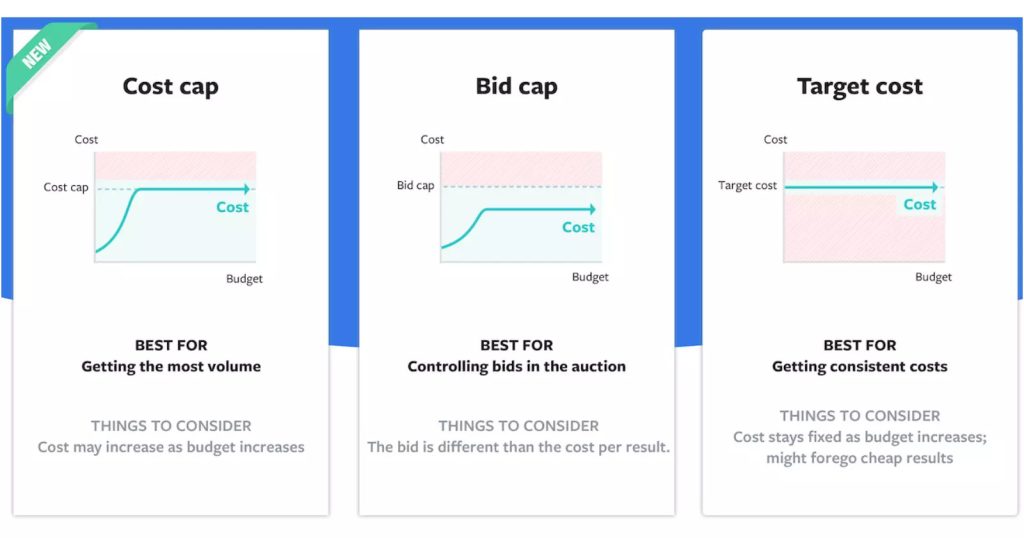
To achieve your desired ad campaign results, consider NEMI Ads’ advertising services. With a team of experienced Digital Marketing experts in running Facebook ads across various formats, NEMI Ads is committed to optimizing your campaign with the most cost-effective CPM, allowing you to focus your budget on more important goals.
4. When to Invest in CPM for Facebook Reels vs. Other Ad Formats?
Investing in CPM for Facebook Reels is particularly advantageous when your ad campaign:
- Targeting a younger audience who prefer short-form video content.
- Aiming to boost brand awareness or engagement.
- Creating creative, engaging short videos that resonate with users.
- Seeking a cost-effective CPM with higher engagement rates.
5. FAQs About CPM on Facebook Reels
How much does Facebook Reels pay per 1,000 views?
CPM on Facebook Reels varies widely, depending on factors like audience targeting and ad demand. Typically, it can range from a few dollars to over $10 per 1,000 views.
What factors cause CPM fluctuations on Facebook Reels?
CPM fluctuations are influenced by targeting parameters, ad quality, bidding strategy, and seasonal competition. Changes in user behavior and market demand also play a role.
Can I expect a higher CPM with more engaging content?
Yes, more engaging content tends to attract higher CPM as it increases competition among advertisers for those placements. This leads to more effective ad delivery and potentially better ROI.
Is it possible to directly control CPM on Facebook Reels?
While you can’t directly set CPM, optimizing your targeting, ad quality, and bidding strategy can help manage and potentially lower your CPM.
How does Facebook’s ad bidding system work?
Facebook’s ad bidding system includes spend-based bidding, which focuses on budget efficiency, and goal-based bidding, which prioritizes achieving campaign objectives. The system automatically adjusts bids to balance cost and performance.
The cost per impression (CPM) on Facebook Reels is constantly changing. By applying the methods mentioned above, you can significantly reduce these costs and maximize your campaign’s visibility. Stay updated with NEMI Ads for the most effective advertising strategies tailored to your business goals


